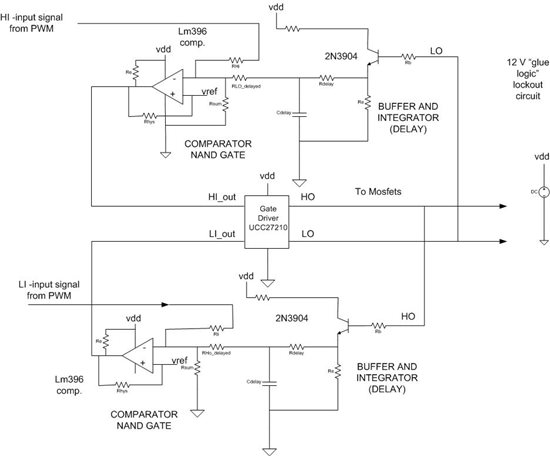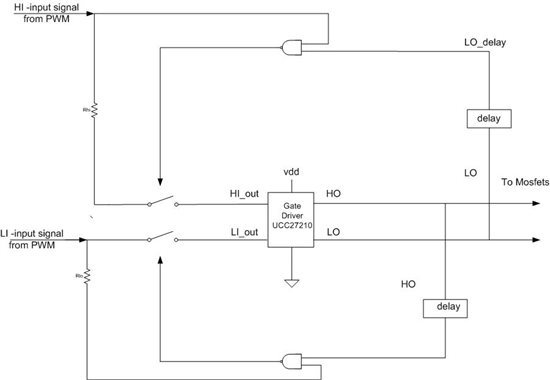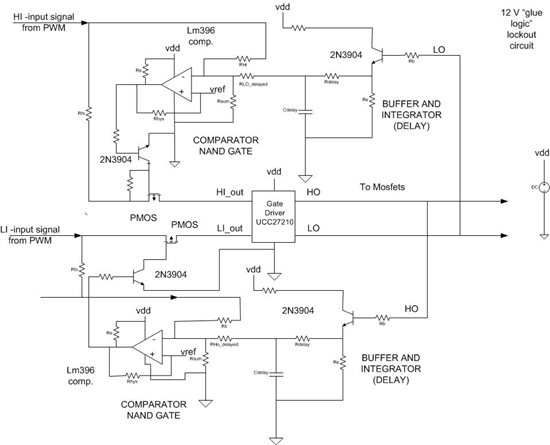Hi,
If we keep both input (HI and LI) HIGH state, will both output(HO and LO) become HIGH?
Does UCC27210( or other Gate driver) have some function which prevent the condition that
both output become high simultaneously like LINEAR TECH LT1336?
http://cds.linear.com/docs/en/datasheet/1336fa.pdf
(As for the LT1336, If we keep both input HIGH state, both output become LOW state.)
Thanks
Go




